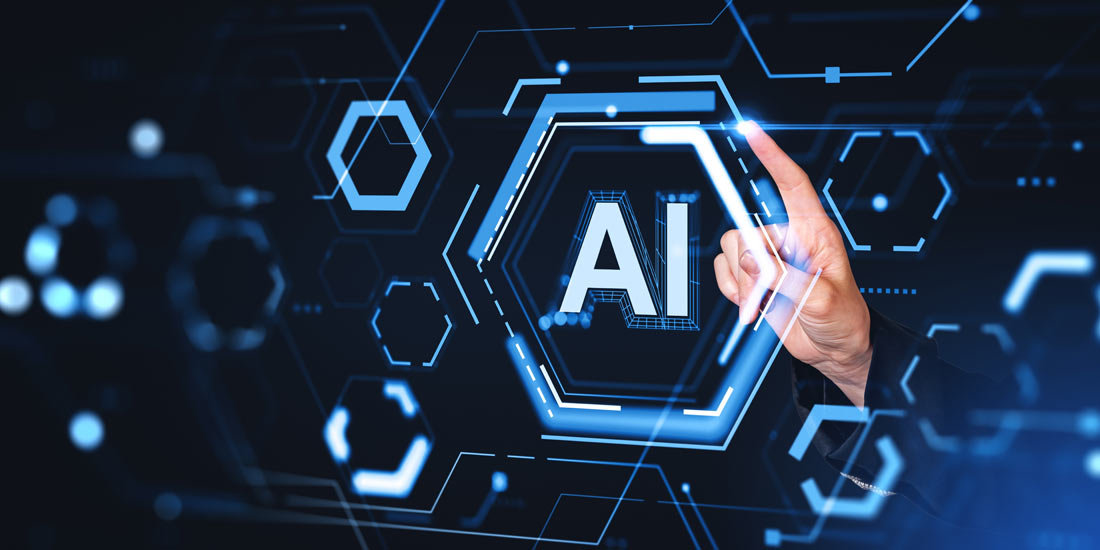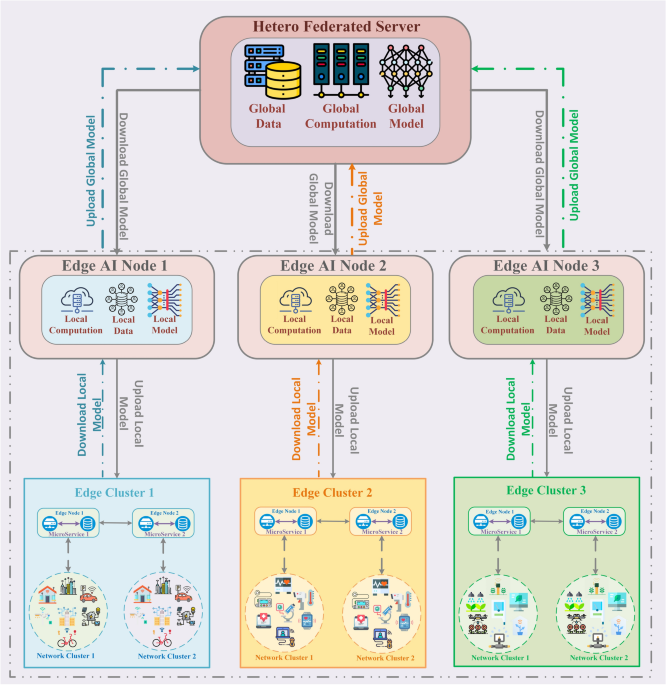Introduction The rapid increase of Internet of Things (IoT) devices and transportable technology in recent years has led to an exponential increase in application data generation1. According to a Cisco report2, around 2.32 zeta bytes of data are produced daily at the network edge of 2023. This enormous volume of edge data has driven the

How Generative AI is Shaping the Next Wave of Innovation – insideAI News
Generative AI – An Introduction
Innovation for change and growth in various sectors around the globe is determined and motivated by the speed in using digital technologies. Generative AI is the most revolutionary technological innovation that has occurred in the last few years. Generative AI gives output that is different from the existing information while operating in a similar way to the previous types of AI and working by a set of rules and algorithms. Generative AI learns from the patterns of the provided data to create new content and this ability to have original output is creating new horizons, bringing organisations and institutions in every sector to the next phase of advancements.
The Power of Generative AI: A Brief Overview
In its essence, Generative AI uses basic machine learning as well as deep learning and neural networks to learn from the quantity of information to generate information.
GPT (Generative Pretrained Transformers), DALL·E, and GANs (Generative Adversarial Networks) paved the way for content generation through AI systems that are able to produce highly creative content.
As per a recent survey, around 74% of Business executives claimed that using Generative AI completely revolutionised their approach towards the business operations. Generative AI’s capability of providing organisations with unprecedented opportunities across all fields, such as manufacturing, healthcare, finance, entertainment, and marketing.
Generative AI – Its Role in the Manufacturing Sector
Generative AI has brought a revolutionary change in the manufacturing industry that was originally based on mechanistic production processes. AI is becoming an increasingly important factor of production in various industries and one of the most noticeable areas is the product designing domain.
Generative design software provides innovative project solutions depending on the defined parameters such as weight, material, and cost amongst others.
At the same time, there is the growth of additive manufacturing, that is 3D printing, with generative design to advance the possibility of constructing specific, delicate structures, which had never been achievable by conventional construction methods.
Generative AI: Forging A New Paradigm in Healthcare
Healthcare, a field that always requires advances, is improvising with the help of the applications of Generative AI. The healthcare sector is using data produced by AI in drug discovery, and personalised medicine to drive progress that can ultimately lead to saving lives.
In drug discovery, for instance, Generative AI is being applied to estimate the chemical configuration of new drugs. It used to take much time to identify a viable drug component from the identification of the target all the way to the development of compound screening and testing.
Now, with AI systems, a company can model millions of ‘molecule conversations’ in a few hours and spit out compounds that are then synthesised in the lab. Generative AI has the effect of greatly accelerating the process of arriving at new drugs while decreasing expenses.
Moreover, deep learning-derived synthesised data considerably bridges the gaps in shrinking patient datasets for medical researchers. AI in this case is useful in developing artificial but highly accurate patient data sets that simulate real-life situations. Generative AI is being used in training machine learning models, conducting diagnoses, and performing forecast analysis.
Generative AI is also being applied for the optimization of diagnostic image quality, in tumour detection and prediction of patient outcomes from existing databases. Special diagnostic applications based on artificial intelligence are expanding the existing set of tools used by doctors, which helps to diagnose the disease and develop an individual treatment plan more quickly and accurately.
Generative AI in the Finance Sector: Unlocking New Possibilities
Generative AI is a new breakthrough that has found usage in the financial services industry, as this industry has been very receptive to new technologies. Algorithmic trading is one of the most promising fields in which generative AI can be applied.
AI systems are able to develop very efficient trading algorithms based on past stock exchange data and market factors, calculated after simulating numerous market conditions. Such strategies are usually better as compared to manual-based strategies, thereby ensuring the concerned financial institution has a competitive advantage in the market.
In addition, generative AI is revolutionising the insurance industry since firms are now capable of generating bespoke insurance policies for their clients. Through Generative AI, the risk and behaviour of the customers can be evaluated to come up with specific insurance solutions that will make customers satisfied and companies likely to avoid any losses due to claims.
Fraud detection is one of the domains where AI is being developed very actively. AI systems are also being used to create a synthetic transaction dataset that will help in fraud detection in real time.
Marketing and Generative AI: A New Frontier
Generative AI is changing the way brands create and deliver content in the field of marketing. With the rise of AI-driven copywriting tools such as Jasper as well as Copy.ai marketers can now generate creative content at scale, from blog posts to social media updates.
The best part about having AI generate content is how personalised it can be, and as promised, how fast it can generate content and data. AI analyses customer data to produce personally relevant messages to attract a given customer segment thereby creating engagement and conversion. Data-driven insights also can be generated by AI marketers to help them better optimise their campaigns in real-time.
Additionally, AI generative is being applied to create synthetic media, like AI influencers and avatars, to interact with social media platforms. Users can have real-time conversations with these AI-generated personae about personalised recommendations, answering queries, entertaining the users, and collecting valuable data for marketers.
Ethical Consideration and Challenges When Using Generative AI – What Are They
Generative AI has the potential to accomplish a wide range of tasks, but there are challenges to its adoption. As synthetic data creation, deep fakes, and AI-produced content come to the fore, ethical issues related to intellectual property, misinformation, and privacy are the main challenges that arise while using generative AI.
Deepfake technology — enabled by Generative AI — is causing concern because it can produce incredibly realistic but entirely fabricated videos. In other words, this carries the risk of political manipulation, identity theft, and the spread of misinformation.
The second big challenge also comes with potential job displacement due to the automation of the creative process. As AI gets better at tasks that humans have historically handled, industries must find the right balance to let AI create jobs while saving the workforce/employees from losing work.
In addition, generative AI models consume more natural resources, thereby raising concerns about the ecological impact. With that in mind, companies must think about how they might be able to implement AI solutions sustainably and ethically.
Conclusion: The Future of Generative AI
One thing for certain: generative AI has changed the game by introducing new technologies and completely changing the working environment of sectors across industries. Generative AI can revolutionise healthcare and manufacturing, and reframe creativity in the hospitality and marketing sectors.
However, as technologies like Generative AI move forward and are adopted and integrated by industries, there will arise issues pertaining to ethics and environmental concerns.
Generative AI is a potential catalyst for progress and improved lives. As we stand on the cusp of this technological revolution, one thing is clear: Generative AI is not only just changing the future; it’s writing it.
About the Author

Harikrishna Kundariya, a marketer, developer, IoT, Cloud & AWS savvy, co-founder, Director of eSparkBiz Technologies. His 14+ years of experience enables him to provide digital solutions to new start-ups based on IoT and SaaS applications.
Sign up for the free insideAI News newsletter.
Join us on Twitter: https://twitter.com/InsideBigData1
Join us on LinkedIn: https://www.linkedin.com/company/insideainews/
Join us on Facebook: https://www.facebook.com/insideAINEWSNOW
Check us out on YouTube!



